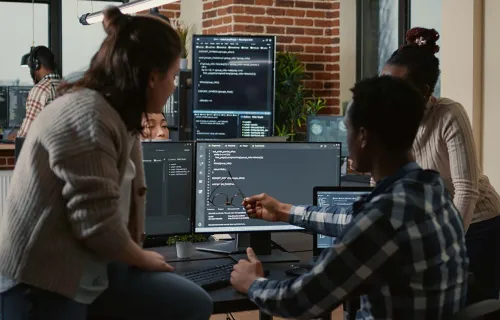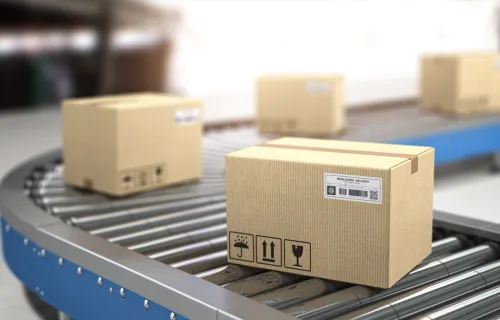The Department of Defense constantly moves equipment worldwide. Gaining visibility into those assets to track their movement and know the location of any given item at any time requires extraordinarily complex processes.
It’s easy to think of total asset visibility (TAV) as simple supply chain management, but it has the potential to be much more. Consider TAV as business process visibility—a window into operational parameters to inform decision-making at any given point.
Anytime a ship unloads vehicles, weapons systems, communications equipment and supplies for the base, everything comes off the ship and the appropriate personnel assumes care of the assets, then moves each asset from the dock or yard to its next location—a maintenance facility, a warehouse or an ad hoc storage facility, for example.
Today’s technology theoretically simplifies tracing each asset through every checkpoint it crosses with barcodes, radio frequency identification (RFID), inventory control solutions and handheld scanners. Last year, CGI completed a real-time pilot program expanding the Marine Corps Platform Integration Center (MCPIC), where we utilized 5G to create a planetary-scale Metaverse environment.
TAV advances
Beginning around 2008, DOD began to mandate using Item Unique Identifiers (IUID) on most of its assets. The IUID appears as a barcode that a scanner can read, logging the item’s existence on the given date and time.
This started to help defense organizations manage their assets, but government assets move constantly. Using the barcode and scanner system, organizations have to ensure the availability of enough personnel at the necessary locations to scan everything. When assets constantly move, are staged for onward movement, or are in temporary storage, it is easy to miss items.
Boosting the value of IUID
RFID technology significantly enhances the utility of IUID. RFID readers can read the RFID tags from 20 or 30 feet away, even if the reader is moving. A few people—or even robots—in a warehouse can catalog everything there more quickly than with barcodes. To track movement, RFID readers are placed along the paths that assets follow to read the tags as they pass.
In a parking lot where you’re tracking a vehicle fleet, someone with an RFID scanner can drive up and down the lot at the fastest speed permissible, reading the tags on each vehicle to establish and verify their locations. Think of it like a reverse Pac-Man game—instead of eating the dots, you’re setting them in place.
Gaming scenarios in the Metaverse
The Metaverse pilot involved integrating MCPIC’s logistics and asset management systems with digital twins, or virtual replicas of physical assets, in a simulated world environment. The integration demonstrated how the Marine Corps can achieve enhanced visualization, real-time monitoring, simulation capabilities, and predictive analytics that will augment training and education and operational efficiency. This milestone was made possible through collaboration with Microsoft and Battle Road Digital.
The 5G radio signal covers virtually all of Blount Island Command in Jacksonville, Florida, where MCPIC is based. The 5G connection lets operators stream data from Internet of Things device sensors onto the digital twin. In this mixed-reality environment, blending the real world with the virtual, planners can simulate the impacts of various strategic decisions to determine the best course of action in a given situation.
While the DOD implementation has proven to be a successful early example, the technology has potential uses well beyond that setting.
Through Application Programming Interfaces, the system could draw on data from public domain sources or commercial services, such as marinetraffic.com, to track specified assets not in the U.S. government’s direct control.
At this stage, the combination of unique identifiers, RFID, 5G and the Metaverse has tremendous untapped potential. It is easy to see how it could significantly enhance disaster response planning, port-of-entry border enforcement or aspects of law enforcement, for example. Other, less obvious use cases are no doubt waiting to be explored.
The recovery of lost assets can be tremendously time-consuming and costly. CGI leverages technology and deep expertise to ensure that assets don’t get lost. Collecting RFID data provides auditability. All of this enables our clients to be efficient.
With technology inexorably advancing, CGI’s team of experts are equipped to help our clients enable total asset visibility and allow optimal decision-making for our nation’s most critical missions. Contact Chris Hetman for more information.



